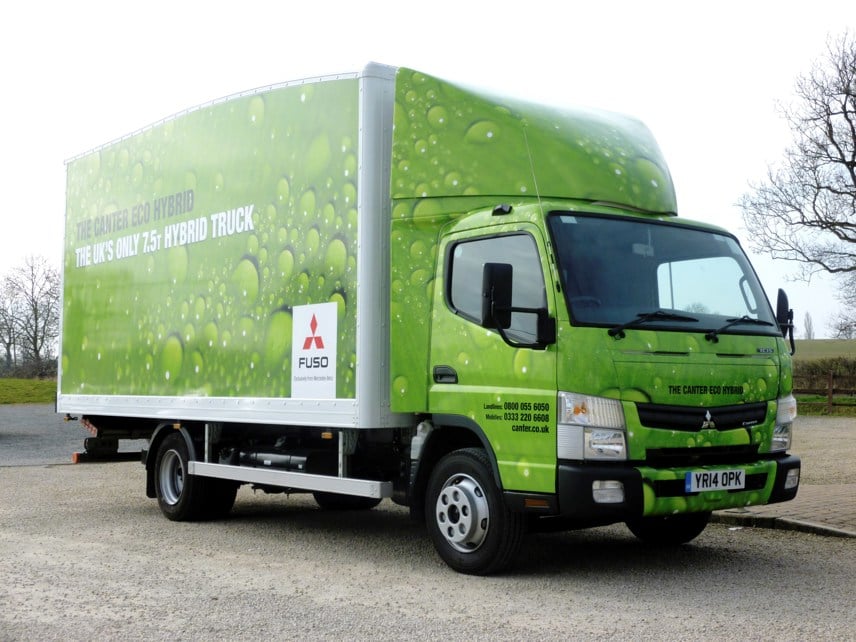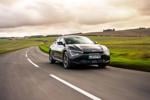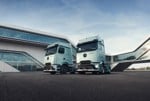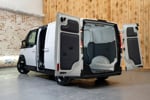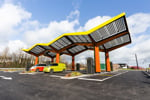Review
Vehicle manufacturers have been investing millions of pounds in a bid to reduce CO2 emissions and improve fuel economy, partly to appeal to customers, partly to meet stringent European Union targets.
There are already more than 20 full electric vehicle and hybrid cars on the market and a smattering of 3.5-tonne light commercial vehicles. But what about trucks? Can batter power be a realistic option for heavies?
Not on its own, and not for the heaviest vehicles, although there are electric hybrid buses being used on London routes.
And it’s this hybrid technology which is starting to gain traction in the truck market – for 7.5-tonne vehicles at least.
Fuso Canter may not be the marque that immediately springs to mind when thinking about the latest engine advancements but this niche player is the first to market with a hybrid truck that uses a mix of both diesel and electric power – and the fuel savings on offer are little short of staggering, at around 23%, with a similar drop in CO2 emissions.
Fuso is 89% owned by Mercedes-Benz parent Daimler and vehicles are purchased through Mercedes-Benz truck dealers, so fleets get the same 24/7 levels of service and support. And, for added reassurance, the hybrid Canter comes with a three-year unlimited mileage all-vehicle warranty, plus a 10-year warranty on the battery.
Canter models go from 3.5 tonnes gvw to 8.8 tonnes but the 7.5-tonner was chosen to be the first hybrid contender as it was deemed to be the ideal size to take the extra weight and volume of the electric motor and battery packs.
Vincente Connolly, director national sales at Mercedes-Benz & Fuso, told Commercial Fleet magazine: “There is always a balance between power output and space so it was felt the 7.5-tonne Canter was right for hybrid power.
“Before this truck went into series production, we trialled the hybrid technology for three years in the UK with fleets such as Geopost, DHL, Royal Mail and Tesco. During that time, there were no breakdowns at all and average fuel savings were 15%, which was an impressive result, both in terms of performance and reliability. Since then we have upgraded the engines, added stop-start and the electric motor and battery technology have improved and now the fleets which are using the new vehicles are reporting real-life fuel improvements of 23%.”
Build at Tremagal in Portugal and with a list price of £36,890 ex-VAT, the Canter Eco Hybrid is around £7,200 more expensive to buy than its conventional brother, but Wood reckons this extra cost will be recouped after 100,000 miles. The model is purchased as a chassis-cab and, working with the customer, the dealer helps with any body required such as Luton, box, fridge or dropside.
The Eco Hybrid is powered by a 150hp diesel engine, assisted by a 54hp (40kw) electric motor. Under way, the truck sets off in electric mode and after it reaches 6mph, an onboard computer decides how much power should be supplied by each unit but the change between each is hardly discernable, as we discovered on a test drive.
The two are mated to a Duonic dual clutch, which seamlessly swaps between the cogs, making the Canter an easy vehicle to control with no clutch pedal to operate.
Energy is fed to the battery during braking. This drives the electric motor that assists the combustion engine not only when next moving off, but also during acceleration. A standard stop-start system adds to the fuel savings.
When Daimler first took control of Fuso 14 years ago, becoming the majority stockholder in 2004, there were fears that the Canter would clash in the sales league with the 7.5-tonne Atego, but they are actually very different trucks.
The Canter has a smaller footprint and outbids its rival in the payload stakes as it’s lighter and designed more for shorthaul work, whereas the Atego is more likely to be seen plugging the motorways on long-distance work.
On our test route, there was no indication that a lighter bodyweight meant a lesser build quality.
Despite its extra gross vehicle weight, the Canter has a large-van feel to it, so any drivers trading up from 3.5 tonnes will immediately feel at home. In some countries, the Canter is offered with narrow or wide-cab options but in the UK we get only the bigger of the two. With three on board on our test route, there was plenty of space for us and our luggage.
The Canter’s seat is air-compressed as standard and with a rigid, upright position and a totally flat steering wheel, the driving position is ideal for long journeys.
We were impressed with the quiet, efficient way the two powerplants intermixed and hardly noticed at all the two swapping over.
West Horsley Dairy reaps the benefits on a stop-start delivery route
One fleet which has invested in the FUSO Canter is Woking-based West Horsley Dairy, which has been running an Eco Hybrid for eight months.
The firm is run by Philip Colton, who said: “By investing in this innovative new vehicle not only are we demonstrating our own responsibility to the environment, but we are also supporting customers who are constantly looking to increase the sustainability of their own operations. The truck is going into the city every day and after just two weeks on the road has already created enormous interest.
“Given the short-distance, stop-start nature of the work, and the traffic congestion in London, it’s never going to be the most fuel-efficient of delivery routes, but following driver training delivered by Rossetts, we’re starting to see improved mpg figures compared to the vehicle on the same job previously.
“The Canter is running on partial electric power for much of the time it’s in the city, so it’s here that the real benefits are to be found. Recognition from Transport for London, in the form of a reduction in the daily £10 congestion charge we pay as a fleet operator, to reflect the commitment to the environment that we’ve demonstrated, would be much appreciated.”
Technology advances may enable heavier hybrids
Could hybrid power be used for bigger trucks in the future? Vincente Connolly told us: “The only thing stopping us using this technology in a 44-tonne Actros right now is that there isn’t room for the electric motor and batteries on the chassis. But who knows what’s around the corner?
“Five years down the line, batteries will become smaller and if so we could start seeing bigger hybrid trucks. There are a number on test already back at the R&D headquarters in Japan.”
One big bugbear for Connolly at present is that despite negotiations with Transport for London, the Canter Eco Hybrid is not exempt from the London Congestion Charge.
He said: “It is disappointing that we can’t get this technology recognised and in doing so offer our customers a clean vehicle that can escape the London congestion daily charge, but we’ll keep presenting the vehicle’s case.”
Connolly added: “Truck buyers are traditionally cautious when it comes to new innovations and we feel they need to see the vehicle to understand the technology. Once people get behind the wheel, they realise just how good it is. ”
Fuso, which took 15.6% of the 7.5-tonne market in 2014, is organising a series of Canter roadshows across the country for potential fleet buyers to try out the vehicles.



